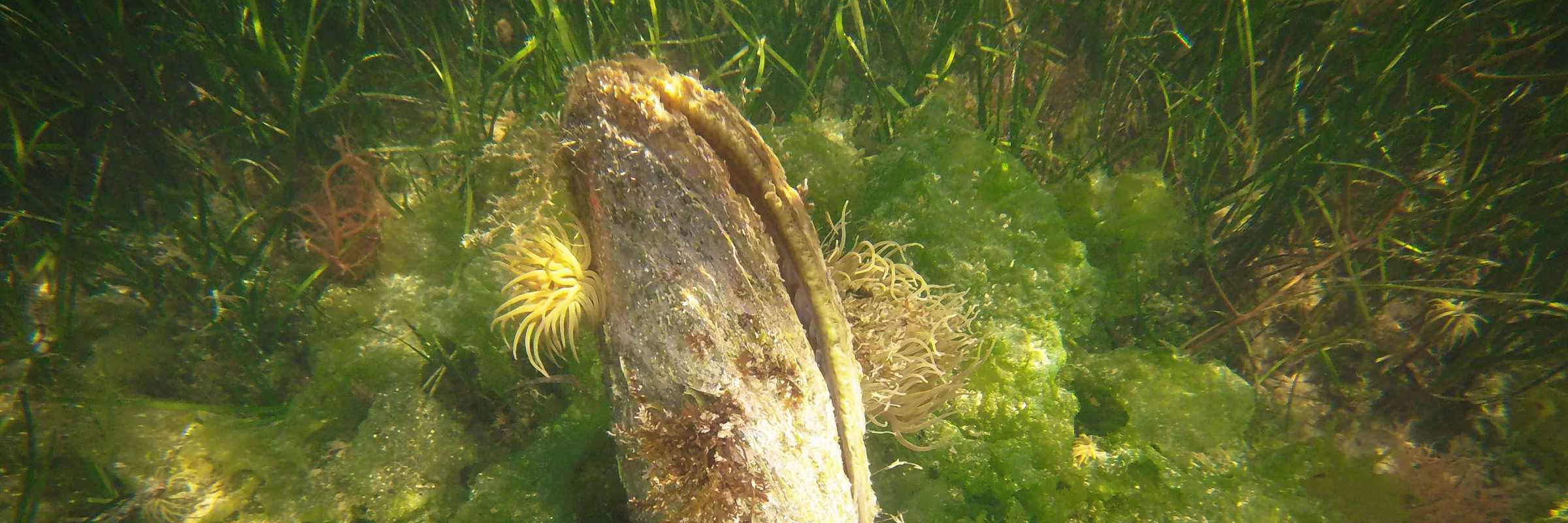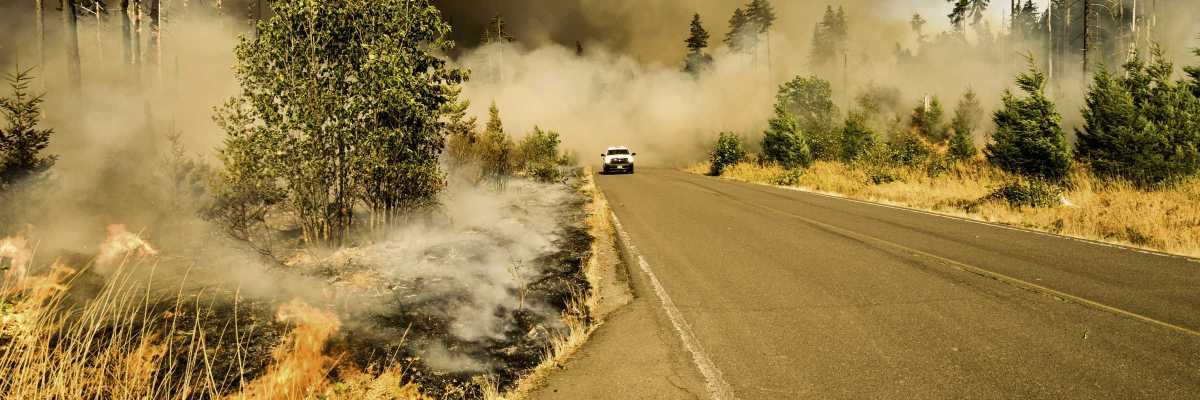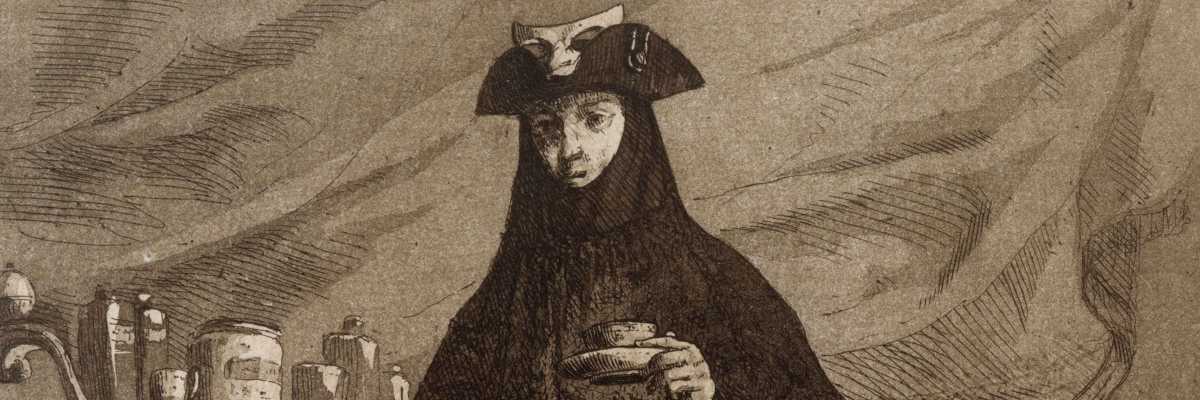Pinna nobilis is the name of a large marine invertebrate, also known under the name of sea castanet, stura or palostrega, an endemic species of the Mediterranean (i.e. present only in this area) as well as one of the largest bivalves in the world, which reaches one meter high, so much so that in our lagoon it is possible to see it emerge in conditions of low tide.
Its presence in the entire Mediterranean is fundamental because it is a habitat-building species, which promotes biodiversity, bearer of ecosystem services, as well as flag-species for all other related species that depend on it.
In practice, the Pinna nobilis plays a key ecological role, as a water filter and as an ideal habitat for other marine species that grow and feed around it, forming rich populations.
Today it is in a critical condition, so much so as to push the International Union for the Conservation of Nature (IUCN) to classify it as critically endangered, or the condition immediately before the extinction of a species. In fact, if indicatively since the 2000s the species has experienced a very important phase of recovery and expansion, to the point of being even anomalous in some areas (including the Venetian lagoon), since 2016 an epidemic has been unleashed which is literally canceling the presence in many parts of the Mediterranean.
From Spain it has widened to reach the Adriatic where, at the moment, after having gone up the Dalmatian coasts it seems to have stopped at Trieste. The Venetian lagoon does not seem to have been affected at the moment.

A specimen of Pinna nobilis photographed by Marco Sigovini, CNR-ISMAR of Venice (CC-BY-4.0)
The origin of the epidemic is not yet determined, although it appears that the pathogen Haplosporidium pinnae (a genus of protozoan that interferes with its life processes, in particular causing the inability to feed, resulting in a state of starvation and then death) is at least an important contributing cause of the current death events of the species. Other threats to which the species is subjected, according to ISPRA (Higher Institute for Environmental Protection and Research), are attributable to marine pollution, which affects the larval stages of the species, its collection for ornamental purposes and forms of fishing. illegal with grazing tools on the Posidonia oceanica prairie, which causes its destruction.
To cope with the emergency throughout the Mediterranean, mapping, research and study projects have been launched in order to be able to find a solution to stop the ongoing epidemic.
The promptness of reaction and the time factor are decisive in cases like this, which led a working group of the CNR-ISMAR of Venice (Institute of Marine Sciences of the National Research Council) to launch the participatory science project "Map la Fin!" for research, conservation and citizen involvement purposes.
We reached Marco Sigovini, the head of the initiative by telephone, to better understand the project and the importance of making an active contribution to it, through the participatory reporting of the specimens observed in our lagoon.
“Map the Pinna! aims to map the widespread presence of the Pinna nobilis throughout the Venetian lagoon, a particularly large water basin (which is undergoing an ever greater transformation from a transitional environment, characterized by typical lagoon conditions, to an arm of sea, ed) ”- explains Sigovini -“ this will allow us to achieve a first overall picture of the distribution of the species in our territory, even in the less known areas ”.
"This first phase is vital in order to be able to build a reliable map on which to develop our research, first of all to be able to analyze and understand which conditions constitute the optimal habitat for the survival of the species" - continues the researcher.
"Accelerating the pre-epidemic mapping, therefore, is extremely important to know the current distribution and understand which factors regulate it such as the range of salinity and temperature, thus understanding those elements useful for predicting the dynamics of the species" - continues Sigovini - "but it will also serve to understand the current state of health of the Pinna in our territory and if the lagoons are habitats in which the species has a greater chance of surviving."

A specimen of Pinna nobilis photographed by Marco Sigovini, CNR-ISMAR of Venice (CC-BY-4.0)
On the launch of the shared research project, Marco explains that "the idea of launching a participatory research, through this first phase of reporting the presence of specimens in the lagoon by anyone who identifies even just one, was born from a need very practical: the lagoon is very large and our team runs the risk of not being able to cover it in a capillary way quickly. Pinna nobilis, especially as a key species for biodiversity, is part of the common good called the lagoon. We also strongly believe in sharing knowledge, so involving the people who live in the lagoon seemed natural to us. "
We asked Marco why it is important to participate in the project:
- although there has already been a great response from citizens, in some areas, especially the innermost ones, further participation is very important to achieve accurate mapping
- once the first phase has been completed, the next one will involve the validation of the data collected from the initial mapping and a comparison with the characteristics of the sediment and the water column, in order to identify the key environmental factors for the species
- The mapping of Pinna nobilis in the lagoon also represents the essential starting point for monitoring the state of health, in particular with regard to the epidemic, and for defining conservation and management measures
- the species is at risk throughout the Mediterranean, being able to understand how Pinna nobilis responds to the epidemic in our lagoon, if it shows greater resistance and why, it will allow us to acquire knowledge and establish strategies for the conservation of the species throughout the Mediterranean basin
- Each report, therefore, can make a difference not only in the beloved lagoon waters but in all the coasts ranging from the Adriatic to the gates of the Atlantic Ocean.
How to report? You can do this through the project map (follow the directions, double-click on the exact point you want to report, a form will open to be filled in) or by email at the address [email protected].



